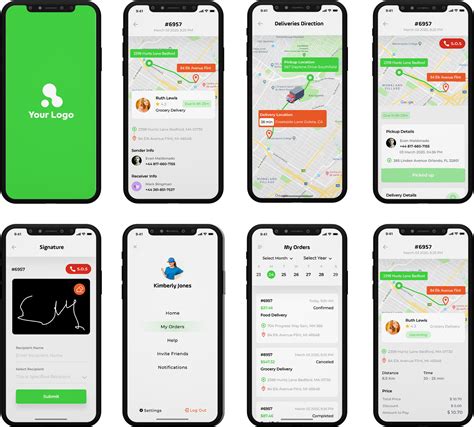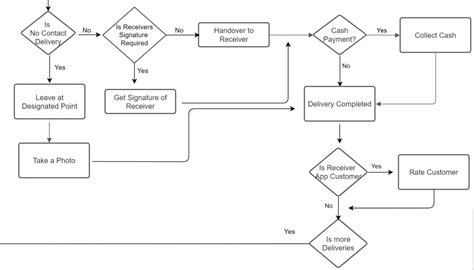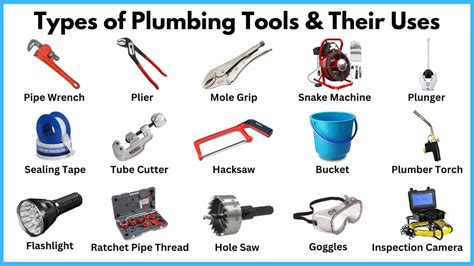Delivery App Driver

In the ever-evolving world of on-demand services, delivery app drivers have emerged as the unsung heroes of our convenience-driven society. These dedicated professionals play a pivotal role in connecting businesses with consumers, ensuring that goods reach their destinations swiftly and efficiently. As the gig economy continues to thrive, the demand for delivery services has skyrocketed, creating a dynamic and challenging environment for those navigating the roads as delivery app drivers.
This article aims to delve into the multifaceted world of delivery app drivers, exploring their daily realities, the challenges they face, and the strategies they employ to thrive in this fast-paced industry. By examining real-world experiences and industry insights, we will uncover the intricacies of this profession, offering a comprehensive understanding of the role these drivers play in shaping the modern convenience economy.
The Evolution of Delivery Services and the Rise of App-Based Drivers

The landscape of delivery services has undergone a remarkable transformation over the past decade. Traditional methods of ordering and receiving goods have been revolutionized by the advent of smartphone applications. These apps have not only simplified the ordering process for consumers but have also created new avenues for businesses to reach their customers directly.
At the heart of this revolution are delivery app drivers. These individuals, often working as independent contractors, utilize these platforms to connect with customers and businesses, facilitating the seamless delivery of goods ranging from food to groceries, packages, and even specialized items. The rise of delivery apps has been exponential, with platforms like UberEats, DoorDash, and Instacart becoming household names in a remarkably short span of time.
The convenience these apps offer to consumers is undeniable. With a few taps on their smartphones, individuals can have their desired items delivered to their doorsteps within minutes or hours. This on-demand convenience has led to a surge in demand for delivery services, creating a thriving market for app-based drivers.
The Profile of a Delivery App Driver
Delivery app drivers come from diverse backgrounds and have varied motivations for joining the gig economy. Some are students looking for flexible work hours to accommodate their studies, while others are retirees seeking to stay active and engaged. There are also individuals who have made a career shift, attracted by the flexibility and independence that delivery driving offers.
Despite their diverse backgrounds, all delivery app drivers share a common goal: to provide efficient and reliable delivery services. This requires a unique set of skills, including navigational prowess, time management expertise, and excellent customer service abilities. Additionally, these drivers must possess a keen understanding of their local area, ensuring they can navigate efficiently and make timely deliveries.
| Driver Profile | Key Attributes |
|---|---|
| Age | Varies widely, from young adults to retirees |
| Motivation | Flexible work, additional income, career change |
| Skills | Navigation, time management, customer service |
| Local Knowledge | Crucial for efficient route planning |

The Daily Grind: A Day in the Life of a Delivery App Driver

A typical day for a delivery app driver begins with a routine check of their device to see incoming orders. They might start their day by accepting a few orders, planning their route efficiently to ensure timely deliveries. This initial planning phase is crucial, as it sets the tone for the rest of the day and can impact overall earnings.
Throughout the day, drivers navigate busy streets, residential areas, and commercial hubs, often encountering traffic congestion and unpredictable weather conditions. Despite these challenges, they must maintain a calm and professional demeanor, ensuring that each delivery is made with a smile, even if it's just a virtual one through a friendly text or call.
One of the unique aspects of being a delivery app driver is the constant interaction with customers and businesses. Drivers often develop a keen sense of customer service, learning to anticipate customer needs and preferences. This might involve special instructions for delivery, such as leaving the package in a secure location or ringing the doorbell only once to avoid disturbing the recipient.
Efficient Route Planning
Efficient route planning is a critical skill for delivery app drivers. With multiple orders often coming in simultaneously, drivers must quickly assess the best sequence for deliveries, taking into account factors like traffic, customer preferences, and their own fuel efficiency. This involves a delicate balance between speed and accuracy, ensuring that no delivery is delayed while also maximizing earnings.
Many drivers utilize mapping applications and real-time traffic updates to stay informed about the best routes. Some even employ advanced techniques like clustering, where they group orders based on their proximity to one another, thus reducing travel time and increasing the number of deliveries they can complete in a given shift.
| Route Planning Strategies | Description |
|---|---|
| Clustering | Grouping orders by proximity to reduce travel time |
| Real-time Traffic Updates | Utilizing mapping apps for efficient route planning |
| Time-based Delivery | Prioritizing deliveries based on customer time preferences |
The Challenges: Navigating the Complexities of Delivery App Driving
While the gig economy offers flexibility and independence, it also comes with its fair share of challenges. Delivery app drivers often face a unique set of difficulties that can impact their work and earnings. From unpredictable weather conditions to navigating unfamiliar areas, these challenges require resilience and adaptability.
Unpredictable Weather and Traffic Conditions
One of the most significant challenges faced by delivery app drivers is dealing with unpredictable weather and traffic conditions. Heavy rainfall, snowstorms, or even extreme heat can impact road conditions, leading to delays and potential hazards. Similarly, rush hour traffic or unexpected road closures can significantly affect delivery times, potentially impacting customer satisfaction and driver earnings.
To mitigate these challenges, drivers often rely on real-time traffic and weather updates. Many apps provide integrated weather and traffic information, helping drivers plan their routes more efficiently. Additionally, experienced drivers learn to adapt their strategies based on seasonal changes, preparing for potential weather-related delays and adjusting their schedules accordingly.
Dealing with Customer Expectations and Preferences
Meeting customer expectations is a critical aspect of delivery app driving. Customers often have specific preferences and requirements, ranging from delivery time frames to special instructions for drop-offs. Some customers might request that their package be left in a secure location, while others might prefer a personal hand-off. Meeting these diverse expectations requires excellent communication skills and a keen awareness of customer needs.
Many delivery apps provide drivers with a platform to communicate directly with customers, allowing them to clarify instructions and ensure a positive delivery experience. This two-way communication not only enhances customer satisfaction but also provides drivers with valuable feedback, helping them refine their service delivery.
Maximizing Earnings: Strategies for Success in the Delivery App Industry
While the flexibility of delivery app driving is attractive, many drivers are also motivated by the potential for high earnings. However, maximizing earnings in this industry requires a strategic approach, combining efficient route planning with a keen understanding of market dynamics and customer preferences.
Utilizing Peak Hours and Incentive Programs
One of the key strategies for maximizing earnings is to work during peak hours. These are the times when demand for deliveries is highest, often resulting in higher pay per delivery. Many delivery apps offer real-time data on demand levels, helping drivers identify these peak periods and plan their shifts accordingly.
Additionally, delivery apps often run incentive programs to encourage drivers during slower periods or to meet specific business needs. These incentives can include guaranteed earnings for a certain number of deliveries, bonus pay for completing a high volume of orders, or even referral bonuses for bringing new drivers onto the platform. Staying informed about these incentive programs and strategically planning work schedules can significantly boost earnings.
Building a Customer Base and Reviews
In the gig economy, reputation is everything. Building a strong customer base and maintaining positive reviews are crucial for long-term success as a delivery app driver. Satisfied customers are more likely to use the app again and may even request the same driver for future deliveries, providing a steady stream of work.
Drivers can encourage positive reviews by providing excellent service, being punctual, and communicating effectively with customers. Many apps provide drivers with the ability to leave notes for customers, offering a personalized touch that can enhance the delivery experience. Building a solid reputation not only leads to repeat business but can also open doors to additional opportunities, such as specialized delivery services or promotions.
The Future of Delivery App Driving: Trends and Predictions

As the gig economy continues to evolve, so too will the world of delivery app driving. Several emerging trends and technologies are poised to shape the future of this industry, offering new opportunities and challenges for drivers.
Electric Vehicles and Sustainability
The shift towards electric vehicles (EVs) is gaining momentum across various industries, and delivery services are no exception. With increasing concerns about environmental sustainability and urban air quality, many delivery apps are incentivizing the use of EVs by their drivers. This trend not only reduces the carbon footprint of deliveries but also offers potential cost savings for drivers in the form of lower fuel and maintenance expenses.
Additionally, the integration of renewable energy sources, such as solar-powered charging stations, could further enhance the sustainability of delivery services. As the infrastructure for EV charging continues to expand, delivery app drivers may find themselves at the forefront of this sustainable revolution, leading the way towards a greener future.
Artificial Intelligence and Automation
Artificial Intelligence (AI) and automation are already making significant inroads into the delivery app industry. From route optimization algorithms that enhance efficiency to AI-powered customer service chatbots, these technologies are transforming the way deliveries are managed and executed.
In the future, we can expect to see even more advanced AI applications. This might include predictive analytics that forecast demand based on historical data, helping drivers plan their shifts more effectively. Additionally, autonomous vehicles could revolutionize last-mile delivery, further enhancing efficiency and potentially reducing delivery times. While these advancements may bring new challenges, they also offer exciting opportunities for growth and innovation in the delivery app industry.
What are the key requirements to become a delivery app driver?
+
Becoming a delivery app driver typically requires a valid driver’s license, a clean driving record, and a reliable vehicle. Additionally, most apps have age restrictions, often requiring drivers to be at least 18 or 21 years old. Some apps may also require a background check and a smartphone to access the app.
How much can a delivery app driver earn?
+
Earnings can vary widely depending on factors such as the platform, location, and driver efficiency. On average, drivers can expect to earn between 15 to 25 per hour, but with strategic route planning and working during peak hours, it’s possible to earn significantly more.
What are some tips for success as a delivery app driver?
+
Success as a delivery app driver requires efficient route planning, excellent customer service skills, and a strong understanding of local areas. It’s also crucial to stay informed about incentive programs and to utilize peak hours for higher earnings. Building a positive reputation and maintaining good reviews can lead to repeat business and additional opportunities.



